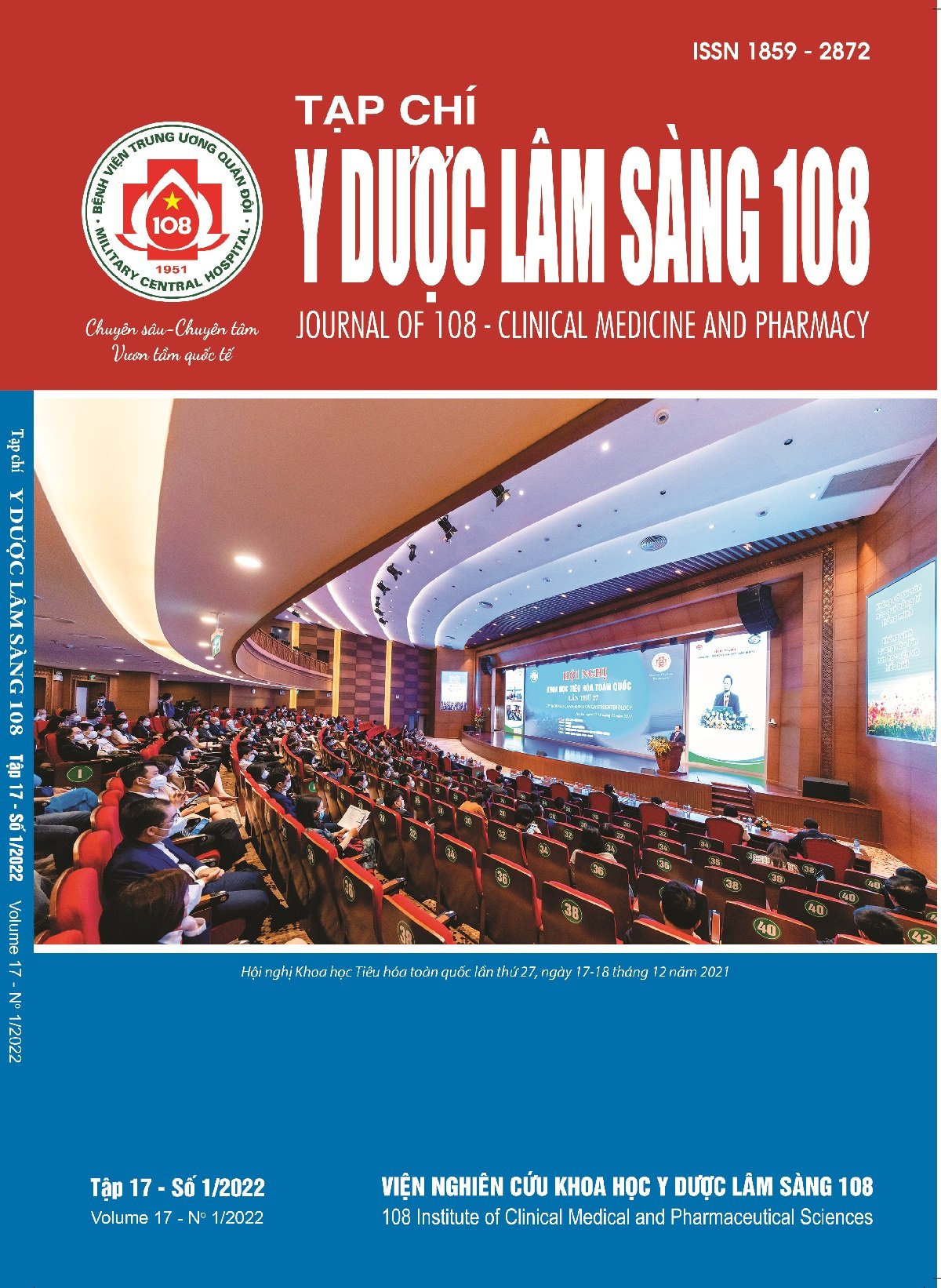Relationship between tumor grade according to WHO classification 2016 and some other pathologic features of clear cell renal cell carcinoma
Main Article Content
Keywords
Abstract
Objective: To describe the histopathological characteristics and to evaluate the relationship between tumor grade according to WHO classification 2016 and some other pathologic features of clear cell renal cell carcinoma. Subject and method: A descriptive study on 98 operated patients with clear cell renal cell carcinoma at the 108 Military Central Hospital from January 2015 to May 2021. Result and conclusion: The mean age of patients was 56.26 ± 12.25 years; the ratio of men:women was 2.1:1. The average tumor size was 5.2 ± 2.1cm. The rates of cases with tumor necrosis, perinephric fat invasion, renal capsule invasion and angioinvasion were 29.6%, 16.3%, 36.7% and 15.3%, respectively. The percentage of cases with tumor grade 2 was highest at 49%. There was a statistical significance between large tumor size, tumor necrosis, perinephric fat invasion, renal capsule invasion, angioinvasion and high tumor grade (p<0.05).
Article Details
References
2. Dagher J, Delahunt B, Rioux-Leclercq N et al (2017) Clear cell renal cell carcinoma: Validation of World Health Organization/International Society of Urological Pathology grading. Histopathology. 71(6): 918-925.
3. Delahunt B, Eble JN, Egevad L, Samaratunga H. (2019) Grading of renal cell carcinoma. Histopathology 74(1): 4-17.
4. Delahunt B, McKenney JK, Lohse CM et al (2013) A novel grading system for clear cell renal cell carcinoma incorporating tumor necrosis. Am J Surg Pathol 37(3): 311-222.
5. Guo S, Yao K, He X et al (2019) Prognostic significance of laterality in renal cell carcinoma: A population-based study from the surveillance, epidemiology, and end results (SEER) database. Cancer Med 8(12): 5629-5637.
6. Holger Moch, Peter A Humphrey, Thomas M Ulbright, Victor E Reuter (2016) WHO classification of tumours of the urinary system and male genital Organs, 4th ad. International Agency for Research on Cancer, Lyon.
7. Huang H, Pan XW, Huang Y et al (2015) Microvascular invasion as a prognostic indicator in renal cell carcinoma: A systematic review and meta-analysis. International journal of clinical and experimental medicine 8(7): 10779-10792.
8. Lam JS, Shvarts O, Said JW et al (2005) Clinicopathologic and molecular correlations of necrosis in the primary tumor of patients with renal cell carcinoma. Cancer103(12): 2517-2525.
9. Lang H, Lindner V, Saussine C et al (2000) Microscopic venous invasion: A prognostic factor in renal cell carcinoma. Eur Urol 38(5): 600-605.
10. Jeong IG, Jeong CW, Hong SK et al (2006) Prognostic implication of capsular invasion without perinephric fat infiltration in localized renal cell carcinoma. Urology 67(4): 709-712.
11. Taneja K, Williamson SR (2018) Updates in Pathologic Staging and Histologic Grading of Renal Cell Carcinoma. Surg Pathol Clin 11(4): 797-812.
12. Turun S, Banghua L, Zheng S & Wei Q (2011) Is tumor size a reliable predictor of histopathological characteristics of renal cell carcinoma? Urology annals 4(1): 24-28.
 ISSN: 1859 - 2872
ISSN: 1859 - 2872
